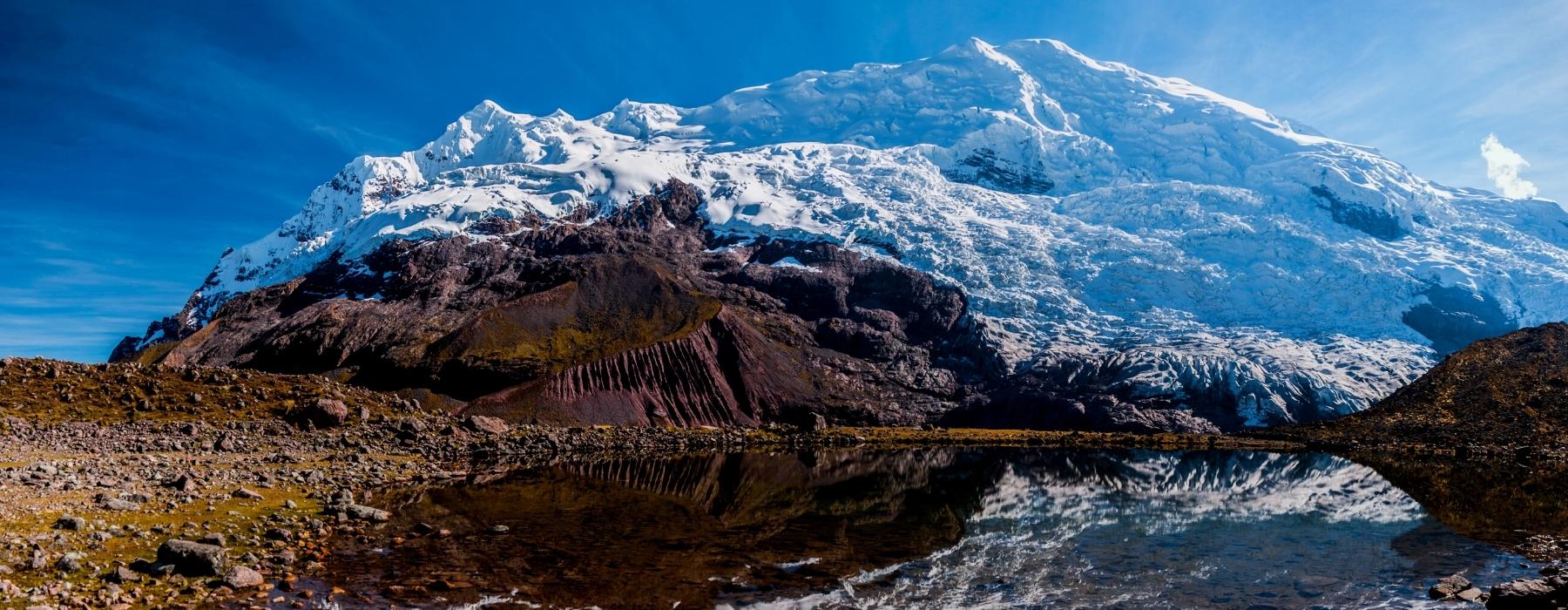
The Ausangate trek is a “little” gem among the attractions of the Cusco region of Peru. To 100 km southeast of Cusco is the impressive Vilcanota mountain range. The mountain range has several peaks over 6,000 meters, including the sacred Ausangate (6372m), the highest mountain in the Cusco region. It is not very popular among millions of tourists that visit the more famous Inca Trail hike to Machu Picchu. The full circuit, is a six day affair although it can be done in a shorter time. There are a few variations of the track, one ends at the Rainbow Mountain, other cuts across the front of the range. There is also a longer version that traverses the entire range of Cordillera Vilcanota.
The Ausangate Trek is renowned for its otherworldly natural scenery. It’s considered by many to be one of the world’s best high-altitude treks, the trek takes hikers over several high passes, into low alpine valleys, and through traditional Peruvian villages. You’ll see snow-capped peaks, herds of llamas, glaciers, and turquoise lakes, all within a stunningly beautiful mountain range. You will also have the opportunity to see the Rainbow Mountains of Vinicunca!
Unlike the Inca Trail hike to Machu Picchu, no permit is needed for the Ausangate trek. The hike is one of the quietest in the region and you probably won’t see another hike. While most Ausangate treks are offered on a 6-day itinerary, Andean Great Treks combines the trek with a visit to Machu Picchu. Camping is usually the norm on this route. The Ausangate trek is one of the few treks in Peru that offers the option of horseback riding. However, certain sections of the hike are so steep that you will have to get off and walk alongside your horse. If you are not a confident cyclist, trekking tours are also available.
The hike offers a variety of wildlife including condors, vicuñas, lynxes, and pumas. The campgrounds are usually next to beautiful blue lakes. You will also have the opportunity to bathe in various hot springs and see the rainbow mountains from the trek! The colorful sandstone mountains in the Vinicunca area are probably the best thing you will see in Peru!
If you are looking for the ultimate adventure, the Ausangate Trek is by far one of the best treks in Peru! Reaching altitudes of up to 5400m, the Ausangate trail offers an ‘off the beaten track’ experience boasting turquoise glacier lakes, snow-capped peaks, rainbow mountains, hot water springs, and much more!
The Ausangate Mountain is a natural attraction that is located in the district of Ocongate, within the province of Quispicanchi, in the department of Cusco. That snow-capped mountain is part of the Cordillera de Vilcanota and, according to an ancient legend, it was the brother of the Salkantay snow-capped mountain.
The Ausangate Mountain, has a height of 6,384 meters above sea level; and is considered an apu, or protective deity of the peoples that surround it; as well as the most representative mountain in the region. Its size is such that it can be appreciated even if one is in the Sacsayhuamán Fortress, not in vain is it considered the fifth highest mountain found in Peru.
This beautiful snow-capped Cusco impresses the eye, due to its incredible natural formations; In it, there are not only beautiful water mirrors such as the Sivinicocha, with turquoise waters, but also stone forests, glaciers and high plains that seem to make this natural attraction a paradise on earth, especially for those tourists who are interested. for adventure sports since the geographical features of Ausangate make it ideal for practicing sports such as rock climbing, ice climbing, trekking, among other activities.
The Ausangate trek appears before our eyes as a mountain challenge; It is known that the first attempts to ascend it occurred in the early fifties of the last century, there were two frustrated first attempts to conquer the top of the mighty Apu, it was not until 1953, when a German expedition achieved the goal, climbing the mountain on its southern slope, in posterity, new routes were opened for the conquest of the Apu, however, only in 1983, thirty years after the first ascent, Peruvian feet crowned the top of the majestic snow-capped mountain.
At present, different companies have been promoting the Ausangate route as a trekking route, one of its purposes is that the expeditionists manage to surround the snow-capped mountain, although to date, few seasoned visitors have dared to follow it. Those who are interested in climbing this snowy mountain must know that they must have had enough time to practice before, since the Apu is not a snowy peak for beginners; so if you are an intermediate level mountaineer, it is recommended that you go in the company of a larger group of people experienced in the field.
The Inca tradition tells that Salkantay and Ausangate were two brothers who lived in Cusco. After a terrible time of drought, both ventured into strange lands to save the town from the crisis. Salkantay went north and found the jungle, and there, Veronica’s forbidden love; instead, Ausangate went south, to the highlands, and there he found a large amount of Andean food, such as camelid meat, corn, and potatoes, which he sent to the population.
The Chillca community, made up mostly of llama and alpaca farmers and herders, is known as the guardian of these beautiful landscapes. Every year on the slopes of the mountain the Qoyllur Ritti festival -“star snow” in Quechua- is celebrated before the Corpus Christi festival, during which thousands of people make a pilgrimage to the Sinakara temple where the painting of the Crucified Christ engraved on a rock. This pilgrimage has been named Intangible Cultural Heritage of Humanity in 2004.
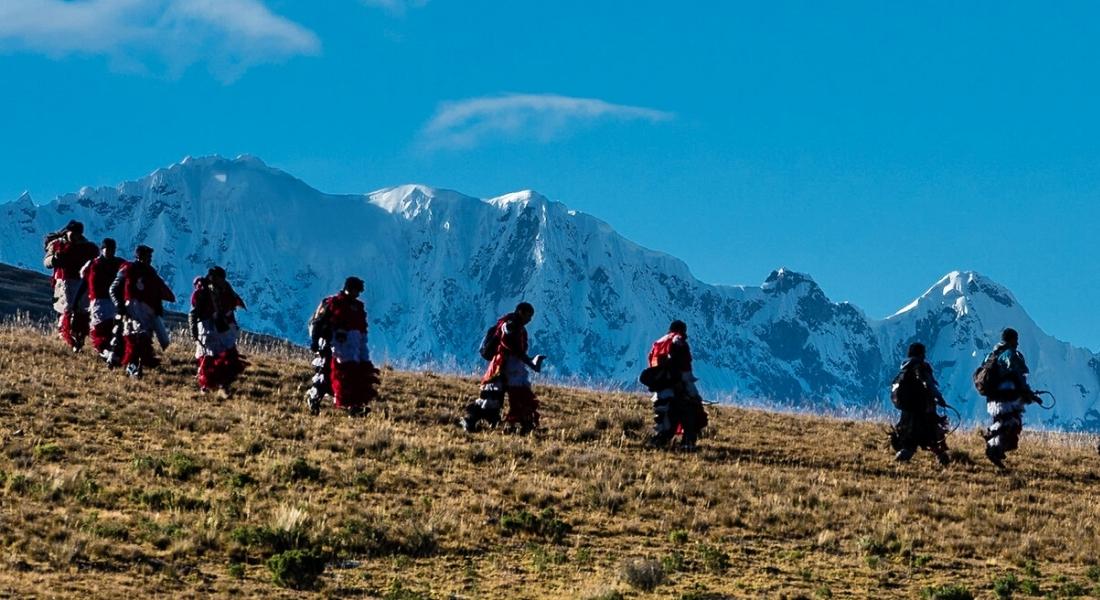
The Apu Ausangate is the fifth highest mountain in Peru at 6,384m, and is the highest of the 6 peaks that exceed 6,000m located in the Cordillera del Vilcanota in the Cusco region. The first ascent was made in 1953 and was led by the famous Austrian climber Heinrich Harrer, part of his first group conquered the north face of the Eiger, which was the story and script for the book/film “Seven Years in Tibet” (The renowned actor Brad Pitt was the protagonist of this film).
Ausangate is the most famous and well-known snow-capped peak in Cusco, the normal route to reach its summit is not very technical and difficult, but a lot of resistance and strength are needed to break the path with loose or accumulated snow to the summit stalls. Ausangate is the main Apu in Cusco and can be seen from many places in the city. It is rarely visited by tourists in this part of the region but is becoming popular as a destination to do the Circuit Trek around the snow capped in the dry season.
The altitude is insane. I’ll mention again that this trek never drops below 14,000 feet! Many of the passes are grueling and tower over 16,000 feet. The mountains are Apus, or Gods, to the Indigenous, so go in with the mindset of respecting them in this regard. By the way, the mighty mountain of Ausangate is a staggering 20,945 feet (6,384 m).
Ausangate is surrounded by extensive and luminous turquoise lakes such as Sibinacocha, as well as stone forests, glaciers and vast plains that impress with their magical landscape. Reaching the top of Ausangate involves a journey of 5 days and 4 nights along 70 km, which is why it is considered one of the most challenging trekking routes in the Andes. However, during the walk, the traveler witnesses incredible postcards: multicolored mountains, herds of alpacas and desert cliffs that together create an incredibly beautiful outdoor experience from start to finish.
The landscape is stunning. The imposing chain of mountains of the Cordillera de Vilcanota with its snow-covered peaks takes the breath away from those who dare to explore it.
There are more than 400 glaciers that extend between the Cusco and Puno regions. One of them is Ausangate, the guardian mountain of Cusco that gave its name to the regional conservation area created in December 2019, over an area of 66,514 hectares distributed between the provinces of Quispicanchi and Canchis, in the department of Cusco.
Like most trek in the region, the best time to do the Ausangate trek is in the dry months between May and September. Unlike other popular treks, the Ausangate trek is very quiet, even in peak season.
In the shoulder months of April and October weather is still pleasant and the trek is very possible. However, because of its altitude you’ll have to contend with freezing nights, even in the dry season. Because of the altitude and snow, the trek is best avoided in the wetter colder season between November and February.
Temperatures during the day in the dry months are usually quite mild and visibility is very high. Because of the height you’ll want to make sure you are wearing layers, especially for the colder nights.
Because of its high altitude and frigid air, rainy season in the region often translates to snowfall for Rainbow Mountain. Visitors to Ausangate Trek and Rainbow Mountain should come prepared with clothes for all weather, as conditions can also change quickly. For more information about when to visit, make sure to check out our blog on the best time to visit Peru.
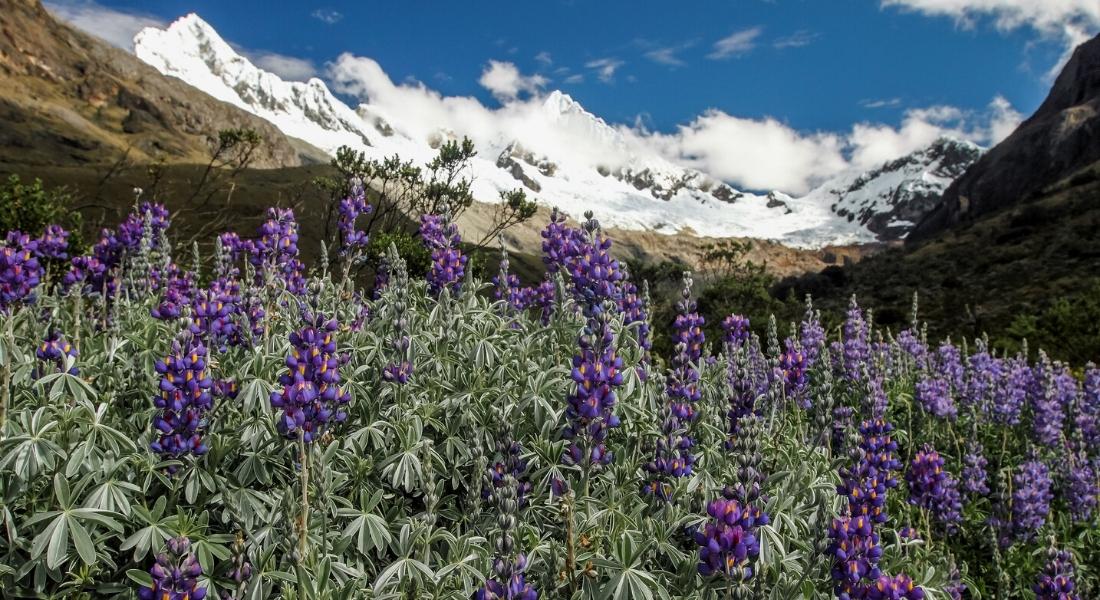
Peru is famous for being home to many exhilarating treks. Though not as popular as some of the other trails accessible from Cusco, the Ausangate trek is just as worthwhile. In fact, being less crowded with tourists is part of its charm. It guarantees travelers who venture on this remote journey a more unique experience. While you won’t come across Incan ruins, it makes up for it with breathtaking natural scenery and spiritual significance. Spot spectacular snow-capped peaks, gorgeous lakes, and wonderful wildlife, including herds of llamas and alpacas. The centerpiece of the trek is the mighty Apu Ausangate, one of the tallest mountains in Peru.
The Ausangate Trek is a high altitude 70km hike in the Peruvian mountains near Cusco with an average altitude of over 4000m. Unlike most other hikes in the region Ausangate is not about Inca ruins, it’s all about beautiful scenery; snow peaks, glaciers, colorful mountain lakes, and the Rainbow mountain. If you like beautiful nature, going off the beaten track and hiking this trek is for you.
Ausangate is one of the most challenging hikes around Cusco but at the same time one of the most rewarding in sense of scenery. If you have any doubts about hiking Ausangate on your own read this article we hope it’ll help you decide whether to do an independent or guided trek. For more info on all our favorite hikes in Peru.
Basic Information
There are circuits from 3 to 7 days, which have different starting and ending points. It is advisable to do each circuit with a certified and highly experienced tour operator. The Ausangate Trek is a challenging high altitude trek through 70 km of the Cordillera Vilcanota mountain range and features some of Peru’s most extraordinary scenery. Ausangate is an off-the-beaten track hiking alternative with minimal foot traffic that allows you to carve into the mystical side of an ancient Andean world.
A voyage to Ausangate mountain is one of natural beauty, living history and ancient spirituality. Considered challenging, this trek is recommended for seasoned hikers only, who have experience hiking at high elevations. The route takes you through the Cordillera Vilcanota, or the Vilcanota Mountain Range. Ausangate is actually the 5th tallest mountain in Peru, standing at 20,945 feet above sea level.
Through the Ausangate trek, you’ll ascend and descend through the mountain range, finding sweeping Andean vistas, thermal lakes, mystical glaciers, green mossy passes and enormous snowy mountains. Along the way, you’ll catch a glimpse of interesting wildlife, like condors, chinchillas and groups of vicunas. You’ll also come across hidden Andean villages richly embedded in centuries-old traditions. The highest point of the trek is 16,800 feet above sea level and the highest campsite elevation is at 15,255 feet.
The Ausangate trek is considered strenuous, with a few moderate days sprinkled in. The trek is classified as Grade C in difficulty, which implies altitudes between 14,800 to 16,400 ft (4500-5000 m) and 6-7 hours of hiking per day. Many of the days have steep sections that cause rapid altitude gain in a short time. Anyone with a good level of fitness can manage this hike, but it is recommended that trekkers have experience with multi-day hikes at high elevations.
Another factor to consider, aside from the steep sections and 16,000 ft+ elevation passes, is the weather. The weather can be quite unpredictable, and blizzard conditions at the higher altitudes are not uncommon. It is important to factor the low temperatures and your tolerance to cold and snow when determining your suitability for this trail.
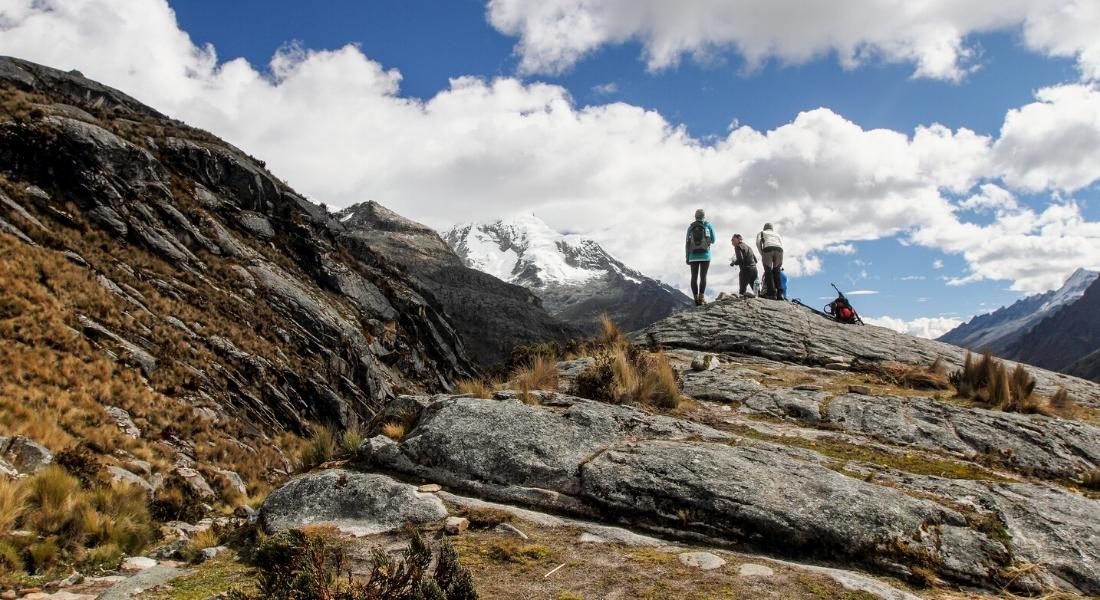
Andean Great Treks is proud to have the best staff of chefs specialized in high mountains, with more than 15 years of experience, in the different trekking routes in Cusco. On our Ausangate route we provide you with the best food service every day, our chefs will prepare meals with 100% fresh and organic foods, since our company is focused on community work and support for farmers who provide us with their best fruits. You can taste the best Peruvian and Cusquenian cuisine, during the breakfast we will have pancakes, omelettes, coffee, milk,butter, cereals, and very nutritious breakfast of Cusco based on oatmeal, quinoa, wheat, etc.
Lunches and dinners are served buffet style, such as sauteed loin, quinoa chaufa, salads, vegetable soups and products from the Andes, chicken, steak, alpaca.
If you are allergic to any type of food or do not consume gluten, or are vegetarian, it is no difficulty for us as we are trained to provide food under these food standards.
In general, Andean Great Treks handles an order and quality in the handling of the products, taking care of their safety so that no illness or discomfort happens during the days of hiking on the Ausangate mountain.
On the Ausangate Trek it is possible to find shops to be able to supply water on the first day. You will then be provided with water that is boiled and then filtered, to avoid any kind of illness or discomfort. It is not a good idea to drink water from waterfalls, lagoons or streams, as many of them could contain toxic minerals or bacteria that are harmful to human health.
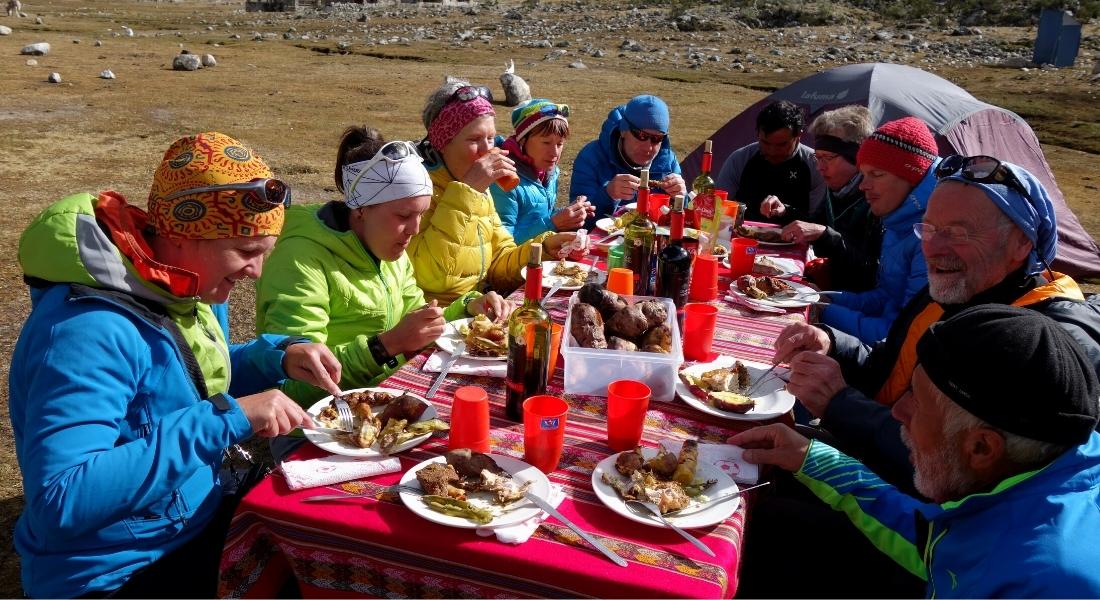
Rainbow Mountain, or Montaña de Siete Colores, is a very popular destination. Here you can see these iconic mountains with rich mineralization bringing red, orange and yellow hues across a seemingly endless mountain expanse. It’s truly a sight to behold.
This part of the trek would bring you to a soaring 17,060 feet above sea level. This portion also tends to be, by far, the busiest part of an otherwise remote journey. It is important to keep in mind the crowds and higher elevation (higher than any other point on the classic Ausangate) to decide if you’d like to add this portion to your Ausantage hike. Talk to a travel advisor for more information.
The best day trekking tour Rainbow Mountain Trek was opened in 2015. It is a very popular tourist destination in the city of Cusco, you will undoubtedly enjoy the wonderful hill of colors. The Apu Ausangate is very close to the 5th highest snowfall in Peru, to see this attraction it is good to acclimatize at least one day, because it rises to 5200 meters high. On the road you can see llamas, alpacas, vicuñas. Native peoples who speak Quechua.
The geological formation of the mountain of the 7 colors, caused many of us an interrogation, perhaps without an answer at that moment, today we will inform you about the geological formation of this natural wonder. The formation of the rainbow appearance of the Vinicunca is due to the marine, lacustrine and fluvial sediments transported by the water that previously covered the area. These sediments date from between the Tertiary and Quaternary periods, approximately 65 million years ago.
The formation of a mountain is due to the alterations of the terrestrial layer and the movement of the tectonic plates, in these alterations the environment, the climate and other external factors have a lot to do. Have you ever wondered why mountains are conical in shape? The conical shape of the mountains is because ice usually forms on the top of the mountain.
Over time, these sediments formed layers, which are today the famous colored layers. The movement of the tectonic plates in the area raised the colorful sediments that became great mountains. After this, the mountains acquired their striking colors due to the oxidation and erosion of minerals in the soil.
Then, due to climate change, it causes it to thaw and this causes the mountains to drain and these generate streams of water that run towards the lower area until they run into rivers or lagoons until they mix with the ocean depending on climatological factors and because of From this process the mountain wears down and takes its cone shape.
There is no doubt that the mountains are a masterpiece of nature, from the top of a mountain we can appreciate everything that surrounds us and enjoy it.
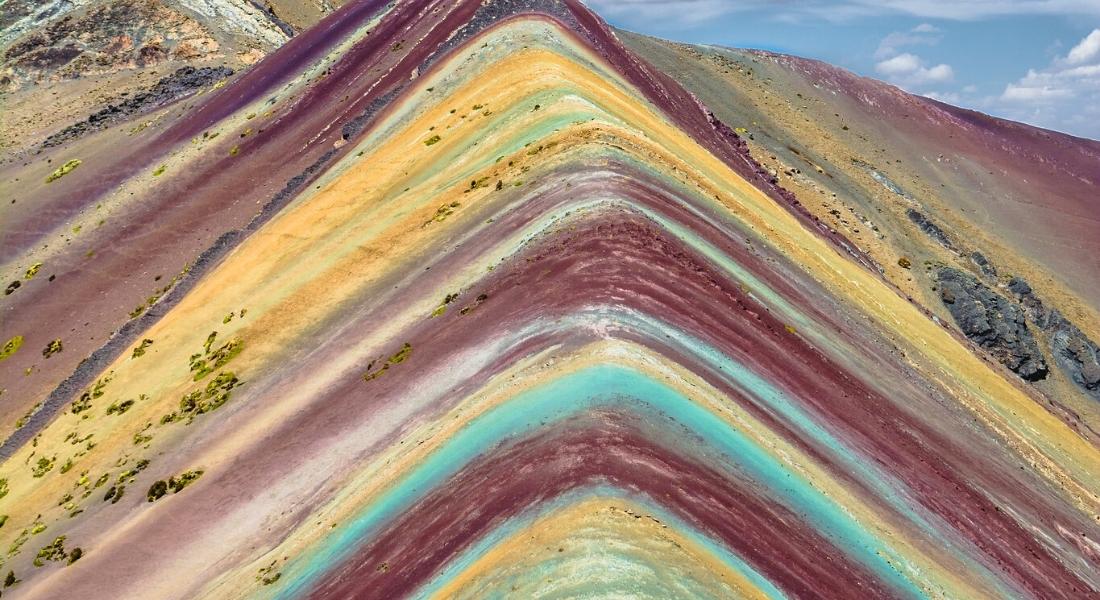
The rainbow aspect of Vinicunca is due to “a complex geological history of marine, lacustrine and fluvial sediments,” according to a report by the Cultural Landscape Office of the Decentralized Directorate of Culture of Cusco.
These sediments, transported by the water that previously covered the area, date from between the Tertiary and Quaternary periods, that is, from about 65 to two million years ago.
Over time, the sediments formed layers (with different grain sizes) that today are seen as the strips that attract tourists so much.
The movement of tectonic plates in the area raised these sediments until they became mountains.
Then they began to acquire their striking colors due to the oxidation of their minerals, exerted by the humidity in the area, and their erosion.
Composition of each strip according to its color:
• Pink or fuchsia: mixture of red clay, fangolitas (mud) and sand.
• Whitish: sandstone (quartz sand) and limestone.
• Purple or lavender: marl (a mixture of clay and calcium carbonate) and silicates.
• Red: argillites and clays.
• Green: clays rich in ferromagnesia (a mixture of iron and magnesium) and copper oxide.
• Yellowish brown, mustard or gold: limonites, calcareous sandstones rich in sulphide minerals (combined with sulphur).
Juan Carlos Gómez, from the Geophysical Institute of Peru (IGP), told BBC Mundo that the hill was “partially” covered with ice and that it received temporary snow until the early 1990s.
Along the same lines, Fabián Drenkhan pointed out that he does not believe that the summit has been a glacier in recent years or decades.
The residents of Pitumarca, according to Haydee Pacheco, from the municipality of this district, say that there was snow about 70 years ago.
Pacheco explains that the mountain gained popularity thanks to the promotion of tourists who walked through the place in the direction of Ausangate, a sacred mountain for the people of Cusco.
The answer is that if, since having trekking poles on the Ausangate Trek route is vital, this instrument will help you overcome very difficult barriers, and have it in good balance during well-sloped descents. The type of cane that is recommended is of free will for you, since these define according to the food you are going to provide, it can be aluminum, carbon fiber, or other material, but if it has a good resistance When hiking, another no less important detail is that you must have the metal protectors at their tips, usually you will be accommodated with rubber soles. Preferably those that can be easily packed and tied.
If you can rent a sleeping bag in our office in Cusco. For the Ausangate Trek it is necessary to have a sleeping bag that has the resistance specification at -15 C ° to -20 C °. Because otherwise you will feel very uncomfortable with the icy weather of the Ausangate Mountains.
The Ausangate trek doesn’t end at Machu Picchu. If you want to combine a trek with a visit to the ancient citadel, consider one of the treks to Machu Picchu. The most popular are the Inca Trail hike to Machu Picchu, Salkantay, and Lares treks. That being said, there are several other reasons visitors choose to hike the Ausangate trek. Especially those who have already seen Peru’s World Wonder, or travelers aiming to avoid the large crowds.
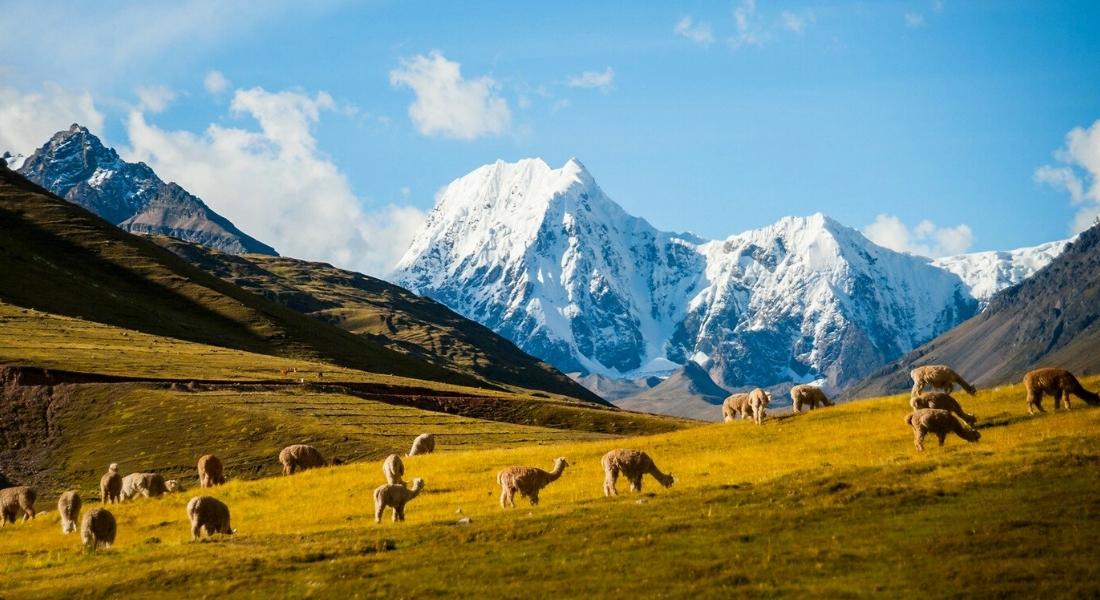
Many hikers enquire whether it’s possible to do the trek on their own, or whether they need to go with a guide. In theory, it is possible to complete the trek without a guide. However, due to the high altitude it is only recommended for those with advanced hiking experience. While it may be more expensive, hiking with a guide will make the experience much more enjoyable. Especially for travelers who do not consider themselves professional hikers. See below for a full comparison of the advantages of hiring a guide vs. hiking solo.
Ausangate Trek With a Guide
Lodge to Lodge Ausangate Trek
Ausangate Trek Without a Guide
The Ausangate trek is different to other treks, mostly because it does not offer a visit to Machu Picchu. Nor does it visit other Incan ruins. Instead, its highlights are natural attractions, including glaciers, colorful lakes, and precious wildlife. Being so close to Rainbow Mountain, it even offers trekkers a chance to visit this popular attraction. In addition, you will encounter remote Andean villages that still retain their traditions. Read more below about the highlights of hiking the Ausangate trek.
Apu Ausangate
For the Incas, mountains served as a connection between the middle and the upper worlds. Important mountains were called “Apus“, named after protective spirits they believed to live inside them. Apu Ausangate is the tallest peak of the Vilcanota Mountain Range in the Cusco region. It is also the fifth tallest mountain in Peru, measuring 20,940 ft (6,384 m). Though the trek does not take you to the top, you will get unrivaled views of its majestic, snowy peak.
Glaciers and Lakes
Apu Ausangate’s nickname is “Creator of the Waters” because of its many glaciers. They are the source of several lakes and rivers that supply water to other parts of the country. For example, the Vilcanota River goes on to feed the famous Amazon River. Thus, Ausangate has a special significance for Peruvians to this day. On the trek, you will come across gorgeous lakes, each of which with its own unique color. The colors range from green to blue, turquoise, and even red.
Rainbow Mountain
One of the biggest attractions of Ausangate Trek is a chance to visit the famous Rainbow Mountain. Mineral rock sediments found in the sandstone give this mountain its iconic colors. While not on the trail itself, a visit can be easily arranged on a one-day detour. See the day-by-day itinerary below for more details on how to incorporate it into your trek.
Flora and Fauna
The Ausangate trek passes through remote areas untouched by mass tourism. This has preserved it as a habitat for many wildlife species found in Andean Mountains. Come face to face with llamas, alpacas, vicuñas, and vizcachas (South American rabbit-like rodents). There are also various types of birds, such as Andean condors, black-chested buzzard eagles, and hummingbirds.
Andean Culture
Several Andean villages are dotted across the trail of the Ausangate trek. These remote Andean communities still retain their rich culture and traditions. Once a year, 10,000 pilgrims gather to celebrate Qoyllur Rit’i, the festival of the “Snow Star”. Several pilgrims climb Apu Ausangate searching for the legendary snow star. At the base of the mountain people celebrate with traditional dances. This event takes place over four days at the end of May or early June, coinciding with the full moon. Visitors who travel at this time are welcome to join the festivities.
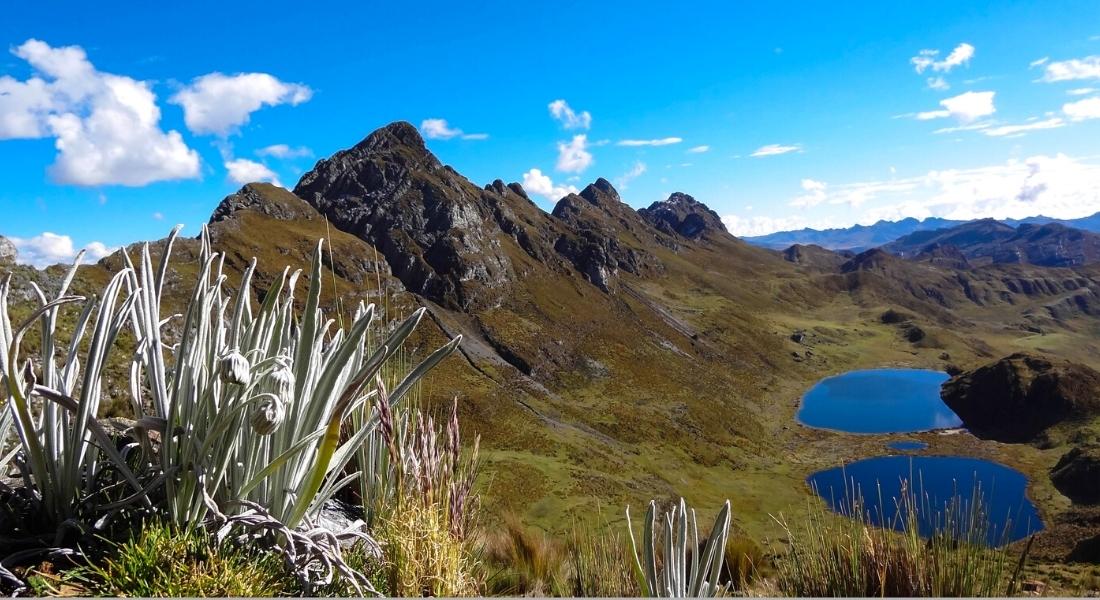
When hiking the Ausangate trek, following certain guidelines will help you stay safe. Choosing the right time to visit is important to avoid torrential rain and mudslides. Adjust to the altitude before you trek and stay hydrated to prevent altitude sickness. Purchasing travel insurance will help you in case something goes wrong. Read the trekking tips below for more details on safety and other useful information to help you plan your trip.
Pick the Best Time to Travel For You.
Excessive rain from December to February can erode the trail and even create mudslides. Not only is it unpleasant to hike in these conditions, but it can also be dangerous. If hiking during the rainy season, listen to any updates from the Peruvian authorities regarding the conditions on the trek.
Be Prepared for High Altitude.
Spend at least 2-3 days in Cusco or the Sacred Valley before embarking on the trek. You will enjoy the trek more once your body has had time to acclimatize. If you feel yourself getting symptoms of altitude sickness, take a break and don’t push yourself too hard.
Tell Others About Your Plans.
When traveling independently, keep an itinerary of your trip at home with family and friends. There is no phone reception on the Ausangate Trek, making it impossible to communicate in an emergency. Informing others of your plans will allow them to seek assistance if they haven’t heard from you.
Practice Your Spanish.
Most locals in these remote Andean villages do not speak English. Knowing at least a few basic phrases, or having a dictionary handy, can help you communicate if necessary.
Drink Plenty of Water.
If hiking through a reputable travel agency your trekking company will be able to provide you with water. If hiking on your own, be sure to use water purifying tablets before drinking water from natural sources. Staying hydrated is especially important in order to prevent symptoms of altitude sickness.
Purchase Travel Insurance.
As with any outdoor adventurous activity, the Ausangate trek can be unpredictable. Cancellations due to weather, mudslides, etc. may occur. There is also risk of injury or illness. For peace of mind, invest in a comprehensive travel insurance plan that will cover you during your entire trip.
How To Get There
Lima is the nation’s bustling capital and travel hub, where all but a few international flights land. From there you need to connect to a domestic flight to Cusco There are many flights per day and the journey only takes about 1 hour. Several airlines fly this route, including some low-cost options. However, the most reliable option is LATAM.
Cusco is the base for most popular treks in the region. From here, arrange the Ausangate trek with a reputable travel agency, which will take care of all logistic details. Your guide will meet you at your hotel and take you to the trailhead. At the end of the trail you will be dropped off back at your hotel.
If you prefer to trek independently, make your own way to the small village of Tinqui. It is located about 100 km from Cusco. You can either arrange your own private transportation or take a public bus. Buses leave from Terminal Paradero Livitaca and the journey takes about 2.5 hours. From Tinqui, follow the signs until you arrive at the trailhead.
Accommodation In Cusco
You will need to arrange accommodation in Cusco for before and after your trek. There is a wide variety of hotels available, ranging from cozy, family-owned inns, to luxurious 5-star resorts. While there are options that fit every budget, it may be worth splurging on your hotel. After such an adventurous trek, arriving somewhere comfortable for some well-deserved rest will certainly feel worth it.
Rainbow Mountain
If you would like to visit the Rainbow Mountain, be sure to plan ahead. When organizing your trek with a travel agency, let them know in advance. Not all trekking companies include it in their itinerary by default. The dry season is the best time to see the vivid colors on the mountain as pictured in photos. During the rainy season, it can often be covered in snow, leaving travelers disappointed. Unlike the rest of the Ausangate trek, Rainbow Mountain is very popular with tourists so be prepared for large crowds.
Another of the typical occupations of these shepherd towns is textile production, a job they perform with singular skill. It is common to see women, usually mothers and daughters, spinning delicately while tending the cattle under their responsibility. Or while they handle the stick loom they set up in the patios of their adobe and clay-tiled mansions. The iconography of the designs in alpaca and sheep wool of the garments that are woven in the province of Quispicanchi, the quality of the fiber used, the natural and sometimes mineral dyes that the artisans prepare, as well as the innate skill with which they weave , inherited from his elders, characterize his work. Experts in making Unkus to bring the coca, the snack and the supplies for the offering to the land; Chuspas where they keep the coca leaves and the lime that they have to take to the fields; Ponchos and scarves that give enough shelter; the Lliqllas that women use to carry babies; the Chumpis or belts; the braids that are placed on the waist, the bracelets, the headbands and other articles of the finest finish that show their admirable knowledge of textile art.
Both in Ccatcca and in Ocongate there are two craft centers that serve visitors whose offer is increasingly adapted to the demands of the modern market; in fact, some of its weavers have participated in very prestigious fashion competitions. Artisanal producers who have been trained by the Jesús Obrero-CCAIJO Association work in them: their work is very delicate and the designs of their iconography allow us to listen to the daily life and worldview of the province’s inhabitants.
Along the paths or in the communities’ own ranches you can always find a fabric or garment to your liking and at good prices. Paying what it really costs to produce a poncho, a lliclla or a scarf made by hand and with great patience by a local artisan is a contribution that can be fulfilled.
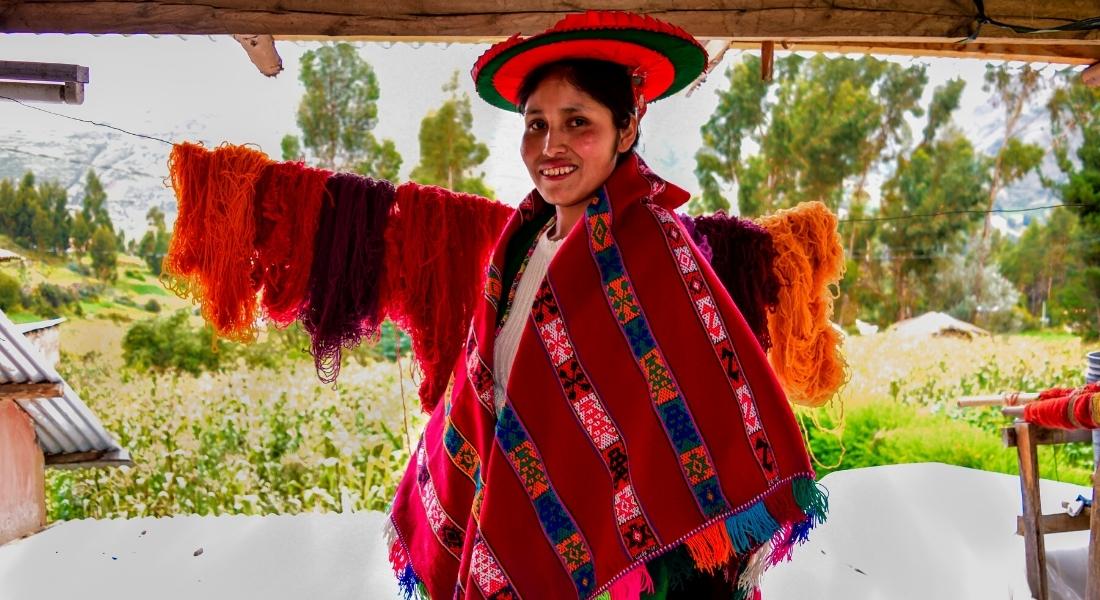
Our chefs and muleteers are humble people who live in the high Andean area of Ausangate Mountain. In their communities, they raise domestic animals and are dedicated to agriculture. Therefore, It is common to see locals trading their products with people from nearby. Those are their main source of income for most families.
Muleteers are the backbone of the Ausangate Trek. Their work consists of hauling all the necessary camping gear and food from campsite to campsite until the Ausangate tour is completed.
Most of them are men, and only a fraction of less than one percent are women. Most of them are young men between the ages of 18 and 45 who come from many distant villages located as far as 100 miles away from Cusco. A good portion of them are farmers who work only part-time, while the rest are people who have migrated to Cusco due to lack of employment and opportunities in their small villages.
Sustainability. Most Ausangate Trek tour operators brand themselves as Sustainable, Eco-friendly, and Ethical. However, the reality of the Ausangate Trek has shown that this is far from the truth. Chefs and Muleteers are fundamental to the operations of the Ausangate Trek. They perform a backbreaking job, literally. Without them, it would be simply impossible for most people to try hiking in this place.
Ausangate Trek providers should ensure that muleteers should have decent nutritious food equal to the food tourists consume, backpacks that will not hurt their backs, and tents of the same quality as the tents tourists use.
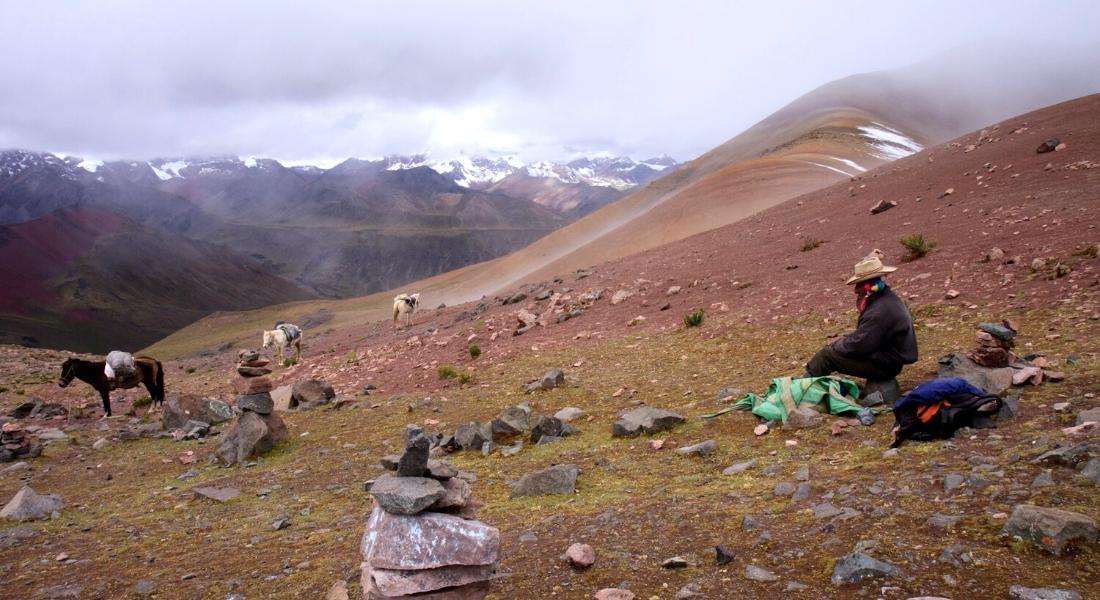
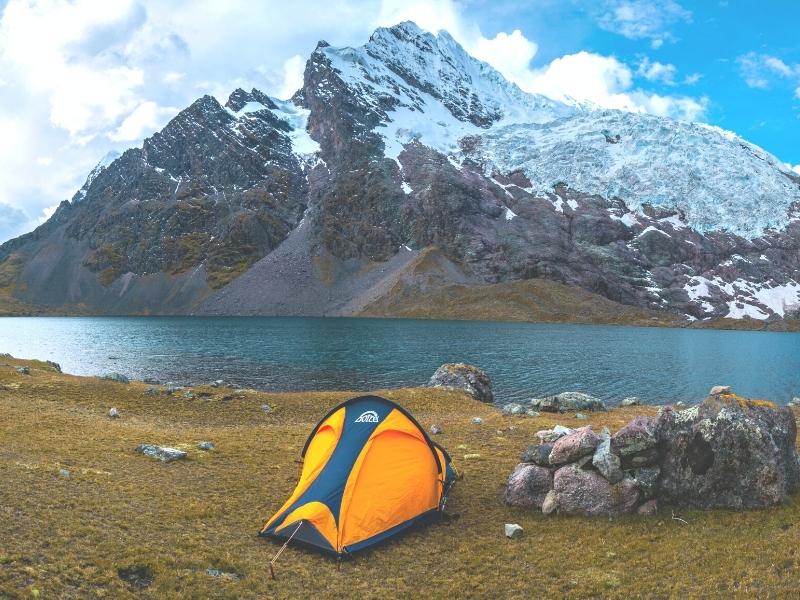
Ausangate is an excellent and quiet/remote trekking circuit offering stunning features such as spectacular mountain scenery, snow-capped peaks, hot springs, turquoise lakes, glaciers, herds of llamas, alpacas, and wild vicuña, picturesque villages, and traditionally dressed Quechua people.
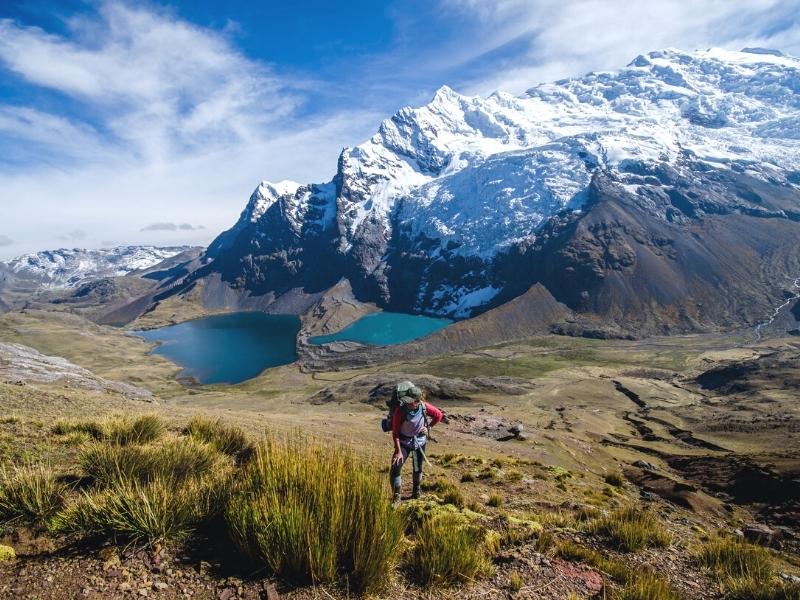
The Ausangate Trek is one of the hiking circuits, most incredible for the beauty of its landscapes, in this mountain adventure you will enjoy unique scenarios, such as lakes of different colors (blue, green, turquoise, red), the mythical mountain of rainbows and ancient Andean cultures, who are the true heirs of the Incas, many still celebrate their ancestral rites.
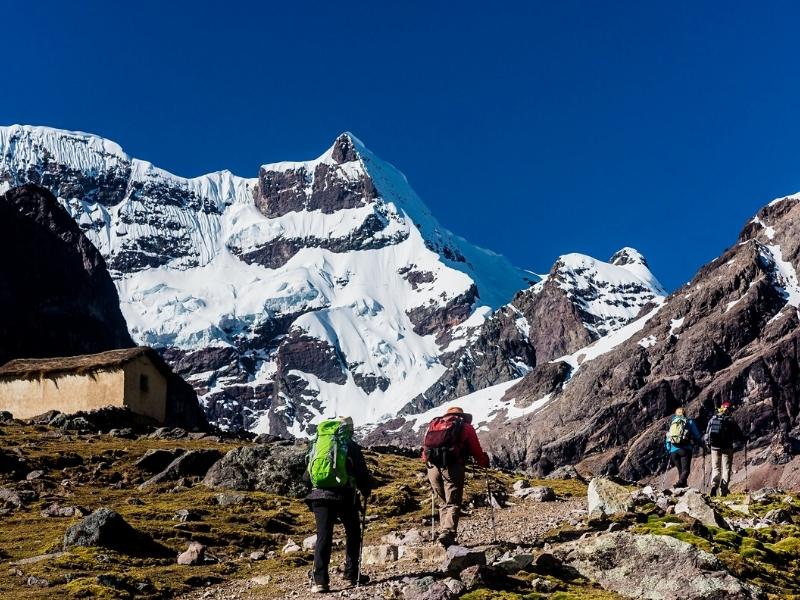
Ausangate Trek is in the Top Ten highly Recommended Treks in the World. Ausangate Trek 5 Days offers you a real taste of the Andean life, impressive mountain scenery, remote Andean villages, hot springs, and turquoise lakes.
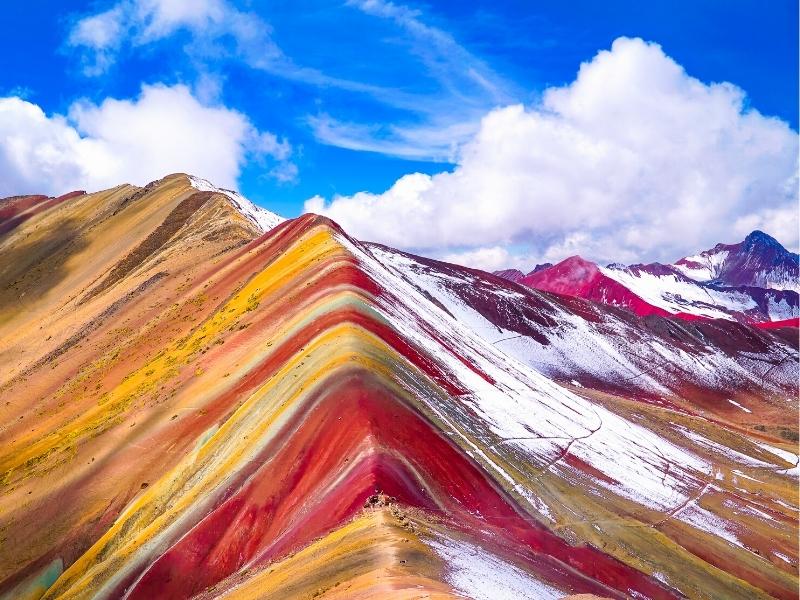
Explore the mythical mountain of Ausangate Trek, and the rainbow mountain. Andean Great Treks organizes this tour only in small groups, with the best trekking equipment.
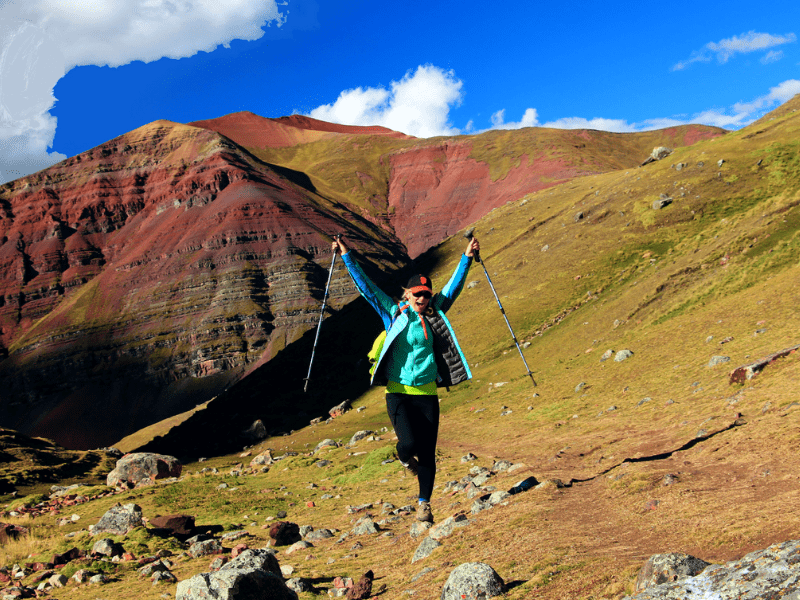
Ausangate Trek & Rainbow Mountain, Explore this route of turquoise lakes, imposing snow-capped mountains, little-visited trails and Very experienced trekking guides.
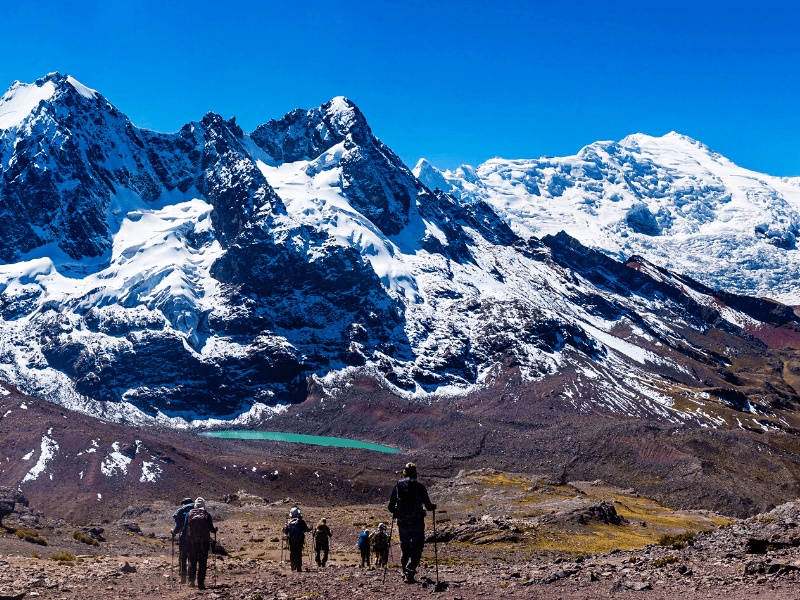
The Ausangate trek offers a fascinating route through the Andes of Peru. You can enjoy stunning mountains and blue lakes, villages with very friendly people who still maintain incas ancient customs.